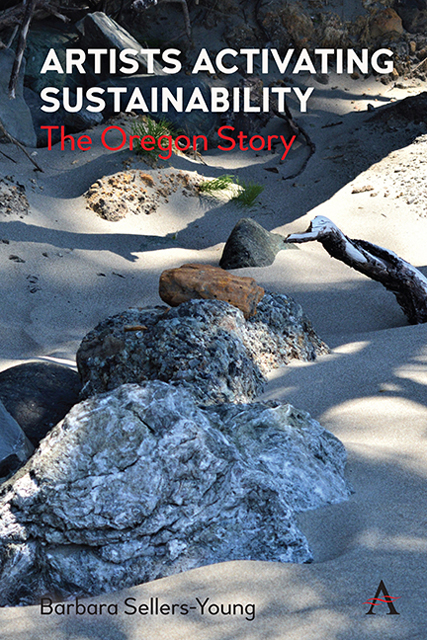Book contents
- Frontmatter
- Dedication
- Contents
- Acknowledgments
- List of Figures
- Introduction: Art, Environment and Metaphor
- 1 Environmental Activism, Arts and the Land of Eden Landscape One: High Desert Basin and Range
- Landscape One High Desert Basin and Range
- Landscape Two Columbia Gorge and Plateau
- Landscape Three Cascade Range
- Landscape Four The Willamette Valley
- Landscape Five Rogue River Valley
- Landscape Six Oregon Coast and Coast Range
- Index
12 - Sitka Center for Art and Ecology
Published online by Cambridge University Press: 10 January 2023
- Frontmatter
- Dedication
- Contents
- Acknowledgments
- List of Figures
- Introduction: Art, Environment and Metaphor
- 1 Environmental Activism, Arts and the Land of Eden Landscape One: High Desert Basin and Range
- Landscape One High Desert Basin and Range
- Landscape Two Columbia Gorge and Plateau
- Landscape Three Cascade Range
- Landscape Four The Willamette Valley
- Landscape Five Rogue River Valley
- Landscape Six Oregon Coast and Coast Range
- Index
Summary
I think that programs which are incorporating environmental with science, arts, music, really meshing those together in a big weaving is really what the world is about anyway.
Frank BoydenTwo-and-a-half hours south of Astoria there is a headland formed by the upthrust of underwater volcanic basalt flows with views of the ocean and the Salmon River estuary called Cascade Head. The grassy headland is home to an endangered species of butterfly, the Oregon Silverspot, that only exists in four other locations in the world. The headland prairies are covered with native plant species—paintbrush, goldenrod, blue violet, streambank lupine and two rare wildflowers—the Hairy Checker Mallow and the Cascade Head Catchfly. Cascade Head is also home to elk, deer, coyote, snowshoe hare, bald eagle, great horned owl, red-tail hawk and the peregrine falcon (Figure 20).
Sitting looking out over the landscape, I contemplate that for thousands of years this was the home of the Nechesne a branch of the Tillamook tribe who built permanent log plank villages along the estuary and temporary summer shelters at fishing and berry picking sites. They were outstanding craftsmen who created sea worthy dugout canoes and designed detailed baskets that could be used for a variety of purposes including cooking. The promontory of Cascade Head was also a vigil site for Nechesne who on spirit quests climbed to the top to fast and dream.
Dreaming continues to be an integral part of Cascade Head through the back-to-nature movement that was an fundamental part of Oregon in the 1970s. Artists Frank and Jane Boyden participated in this movement by starting an Oregon Coast summer camp for children. Their initial goal was to teach children how to deeply observe the many faceted environment of the Oregon Coast. Ultimately, they established a community on one acre donated by rancher Mike Lowell where artists and scientists living and creating in a natural environment could be in conversation with each other. The couple's vision to establish what would become the Sitka Center for Art and Ecology overlapped with Mike Lowell's goal to protect the Cascade headland and integrate it with the Cascade Head Experimental Forest that had been established in 1935.
- Type
- Chapter
- Information
- Artists Activating SustainabilityThe Oregon Story, pp. 201 - 212Publisher: Anthem PressPrint publication year: 2022



